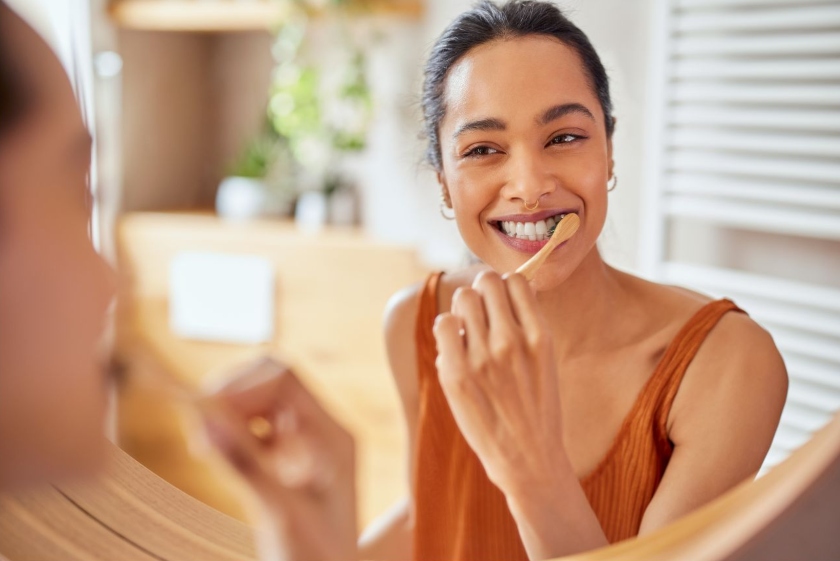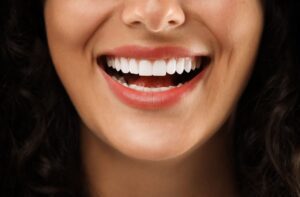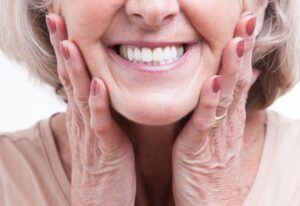Quick Answer (TL; DR)
The best way to practice good oral hygiene at home is to:
- Brush twice daily with fluoride toothpaste,
- Floss once a day
- Rinse with alcohol-free mouthwash,
- Limit sugary snacking
- Stay hydrated.
- Maintain regular checkup visits to your Anchorage dentist.
One of the questions I often get asked is “What’s the best way to practice good oral hygiene at home?”
In truth, Alaska’s sub-zero winters, dry indoor heating, and long nights can be harsh on teeth, and while regular checkups and cleaning help keep them in good shape, the key to keeping your smile in the best condition starts at home.
With this in mind, here are some tips on how to practice good oral health at home – Anchorage style!
Tip #1 – Get The Brushing Basics Right
Everyone knows how important regular brushing is, and most of us adhere to the “brushing twice a day” rule as recommended by the American Dental Association (ADA). But here’s a question…
Do you brush your teeth properly?
Here’s what you need to know…
I’d recommend tilting your brush at a 45-degree angle towards the gumline and adopting small circular motions. To ensure all teeth are covered, try dividing your mouth into 4 sections or quadrants, spending around 30 -45 seconds on each section. Be methodical and remember to clean the outer, inner, and chewing surfaces of every tooth. Oh, and don’t forget to brush your tongue too.
Remember to be gentle as scrubbing too harshly can wear down enamel and irritate gums, especially in Anchorage, where the dry winter air can heighten teeth sensitivity.
What about electric vs manual tooth brushes?
In all honesty, it doesn’t really matter, although some studies show that electric toothbrushes remove slightly more plaque than manual toothbrushing. It’s the way you brush that’s most important.
If you are prone to skipping areas or brushing too quickly. I would suggest that an electric toothbrush may be a better option to keep you consistent.
Tip #2 – Don’t Skip The Floss
When it comes to understanding how to practice good oral health at home, flossing is a big part of maintaining a healthy smile. Yet, according to data, only 41% of Americans floss daily. Moreover, 20% never floss.
There are numerous reasons for this.
- Some find it physically difficult.
- It may cause gums to bleed – particularly when flossing isn’t done regularly.
- They don’t have the time or
- They find it unpleasant.
Think of flossing in partnership with good brushing techniques. Brushing removes food and bacteria from surfaces, while flossing clears the hidden zones/crevices where normal brushing can’t reach.
As a top tip: If traditional flossing feels tricky or uncomfortable, consider investing in a water flosser or interdental brush. Both are excellent for removing debris from tight spaces and dental work.
#3 Consider Dietary Requirements
When it comes to best home practices for good oral hygiene at home, the food we eat can play a big part. Anchorage winters make it easy for us to reach for hot sugary drinks and sugary comfort snacks. Frequent exposure to sugar and acids, even from relatively healthy drinks like fruit juice, can erode tooth enamel over time.
I’m not for one minute saying that you shouldn’t have the occasional treat. In fact, research states that sugar stimulates feel-good endorphins to give you a much-needed boost, and during the long Alaskan winters, a boost may be much needed.
With this in mind, here’s how to adopt a “tooth-friendly” diet without giving up on the things you love altogether.
- Take regular sips of water – Water helps to rinse away food or sugary particles while neutralizing acid. Try drinking water with, or soon after, a sugary snack intake, and don’t forget to brush your teeth.
- Intersperse sugary snacks with crunchy fruit and veg – Okay, so the latter may not have the same comforting appeal, but crunchy snacks like apples and carrots help produce saliva, which rinses away bacteria and fights harmful bacteria. But also, the fibrous texture of vegetables like carrots and celery acts as a natural toothbrush brush, helping to scrub away bacteria and plaque. So even if you substitute one sugary snack in two, every little helps.
- Sip drinks through a straw – where possible, drinking sugary drinks through a straw can limit exposure to the teeth. Naturally, this provides some protection, but it isn’t an alternative to brushing.
- Check your fluoride intake – Did you know that people who drink fluorinated water have 41% fewer cavities than those who don’t? Thankfully, Anchorage’s water supply is fluorinated and, as a result, provides added strength to tooth enamel.
#4 Moisture Matters
If your lips feel dry, chances are your mouth is too! Xerostomia (dry mouth) is common in Alaska, particularly during the winter months when household heating is on. In fact, the Oral Health Foundation suggests that dry mouth affects 1 in 4 Americans over the age of 55.
Essentially, a dry mouth normally means a lack of saliva, which in turn means an imbalance in the mouth’s natural oral microbiome. An imbalance of good vs bad bacteria is often associated with gum disease, cavities, and even fungal infection. Saliva helps to restore equilibrium.
To combat mouth dryness, try…
- Drinking more water – keep a water bottle nearby and take frequent sips
- Chewing sugar-free gum – helps to stimulate saliva
- Limiting caffeine, alcohol, and tobacco – all known to dry out the mouth
- Avoiding medication that causes dry mouth – some antihistamines and decongestants are known to reduce saliva production. If that’s the case, ask your doctor for alternatives.
#5 – Rinse Wisely, Not Constantly
A good mouthwash offers an extra layer of protection to help you carry out good oral hygiene at home, but here’s the thing…
Not all mouthwashes are created equal!
Mouthwashes that contain alcohol, for example, are known to exacerbate dry mouth.
Instead, look for alcohol-free mouthwashes containing fluoride and antibacterial ingredients like cetylpyridinium chloride (CPC). These substances help to protect teeth and gums while not upsetting the delicate bacterial balance in the mouth.
Finally, don’t overuse. Rinsing once a day is adequate, particularly if you’re following all the other hints and tips to the letter.
Your Daily Routine Is Your Best Defence
If I had to sum everything up when considering how to practice good oral hygiene at home, I’d say…
- Understand what works
- Create a good routine
- And stick to it!
At Mint Dental, we’re here to support you every step of your oral health journey. So if you are overdue for a dental exam or you simply need advice on at-home care for better oral health, schedule your next visit with me (Dr McNeil) and my exceptional team. Call (907) 318-7155 today and kickstart your journey towards a better and long-lasting smile.








